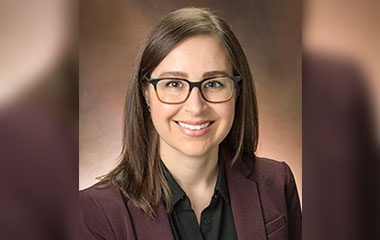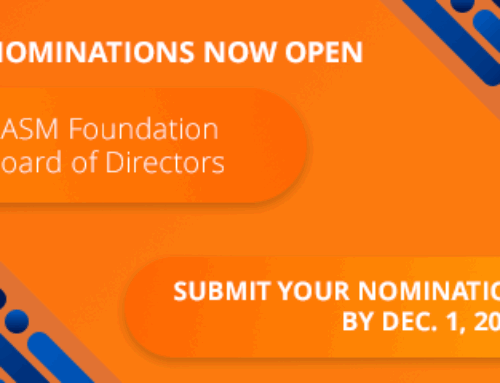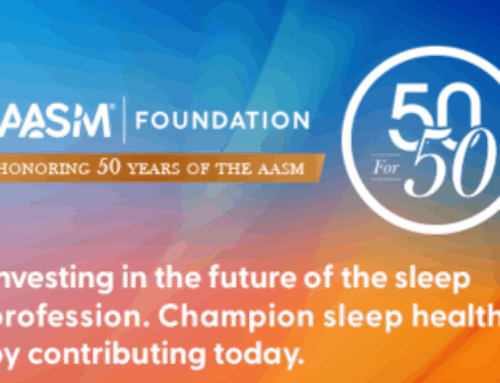Ariel A. Williamson, PhD, DBSM, (pronouns: she/her/hers) is a psychologist in the Department of Child and Adolescent Psychiatry and Behavioral Sciences at Children’s Hospital of Philadelphia and an Assistant Professor of Psychiatry and Pediatrics at the University of Pennsylvania Perelman School of Medicine.
How did you become involved in sleep research?
During my doctoral program in clinical psychology, I had the opportunity to do a clinical rotation at the Children’s Hospital of Philadelphia (CHOP) Sleep Center with Drs. Jodi Mindell and Melisa Moore. I fell in love with sleep research and practice. They encouraged me to pursue this path by inviting me to contribute to a retrospective study of socio-demographic factors and presenting sleep concerns among CHOP sleep patients.
Could you also tell us how you became involved in community-based sleep research?
My early research in graduate school focused on the implementation, adaptation, and evaluation of community-based interventions to promote positive child development and prevent behavior problems. Throughout my career I have been interested in how to effectively disseminate evidence-based clinical practices in community settings, primarily in partnership with community organizations. When I started working with Dr. Mindell, she was aware of this interest and invited me to join a study evaluating the impact of bed provision and sleep education through the Philadelphia-area non-profit organization, Beds for Kids, which provides beds and bedding to children living without a bed and in a home at or below 100% of the US poverty level. At the same time, I was exploring methods to better integrate sleep intervention into pediatric primary care services at CHOP. These two experiences were foundational in building my community-based sleep research.
What inspired you pursue a research focus in pediatrics and sleep?
I love doing pediatric sleep research and practice because sleep is both transdiagnostic and modifiable—sleep problems are prevalent across children with medical, behavioral health, and neurodevelopmental conditions, and many sleep problems can be improved with tailored intervention strategies. I chose to pursue this research focus as I very much enjoy partnering with patients, families, clinicians, and other community members to identify ways to flexibly tailor these intervention strategies for different pediatric populations and clinical contexts.
How would you describe your your NIH K23 grant to AASM Foundation supporters?
My K23 award is a multi-study project aimed at identifying, adapting, and evaluating evidence-based behavioral sleep treatment strategies for young children with insomnia or insufficient sleep who are presenting to primary care settings serving families of primarily lower socioeconomic and/or racially and ethnically minoritized backgrounds. First, we identified key adaptations to evidence-based behavioral sleep strategies to address social and environmental barriers. This initial work was based on qualitative interviews with caregivers of young children with sleep problems and their primary care clinicians (Williamson et al., 2020). We then iteratively adapted and tested these strategies, packaged as the Sleep Well! program, using community-engaged research methods. The results of this adaptation are now in-press, and show strong intervention feasibility, caregiver perceptions of intervention acceptability and cultural humility, as well as initial improvements in child sleep outcomes. We are currently testing this intervention in a randomized trial.
In 2019, the AASM Foundation gave you a Community Sleep Health Grant with Dr. Jodi Mindell, “Impact of Bed Provision and Enhanced Sleep Health Education on Sleep in Socio-economically Disadvantaged Children”. How did the idea and collaboration with Dr. Mindell and the Beds for Kids program come about?
Beds for Kids approached Dr. Mindell to conduct an initial evaluation of their bed provision program. I had the opportunity at that time to work with Dr. Mindell on the results of this study, which showed benefits of bed provision to child sleep, as well as added benefits for children whose caregivers received sleep education (Mindell et al., 2016). Since then, I have been fortunate to join the Beds for Kids board of directors, and we continue to collaborate on ways to enhance the sleep education component of their bed provision efforts.
Could you discuss the goal of this project?
The goal of our current project is to evaluate whether bed provision and Beds for Kids staff-delivered sleep health education results in greater improvements in child sleep duration and other aspects of sleep health compared to the standard Beds for Kids program, which includes bed provision and written sleep health education. We want to also identify the acceptability and feasibility of staff-delivered sleep health education, as this has important implications for broader implementation and dissemination of this strategy in other community organizations.
Any interesting findings you can share?
Although data collection is ongoing, Beds for Kids staff have shared that being able to talk more with families randomized to the staff-delivered sleep education condition has been a great way to get to know families, and that they enjoy this part of the study.
What has been the most rewarding part of being a sleep researcher working in the community?
It is a privilege to collaborate with community organizations and individuals in the community. Incorporating feedback from community members, including study participants and their families, on sleep research questions, study design and methods, and the interpretation of outcomes is the most exciting part of this work. I am always learning from community partners, and I believe that this partnership is a necessary element when developing effective and scalable community-based interventions.






